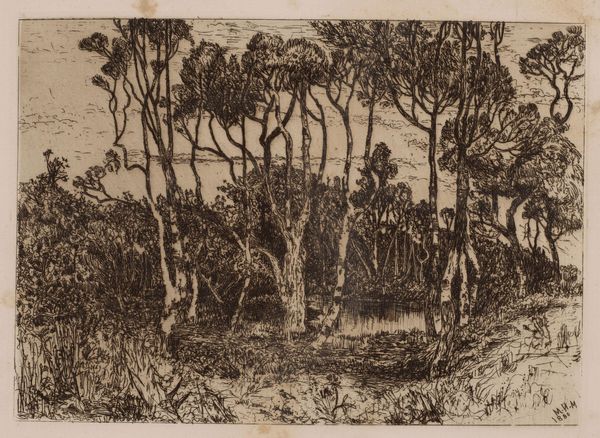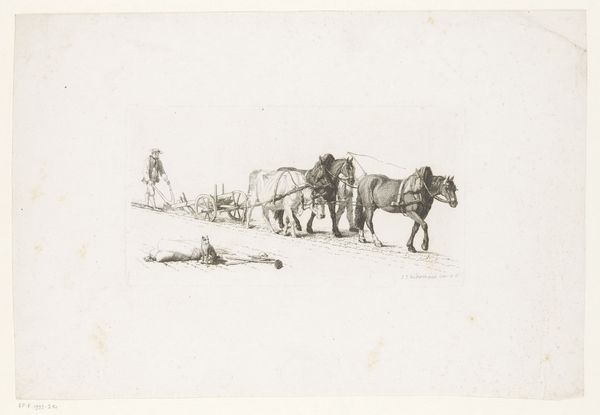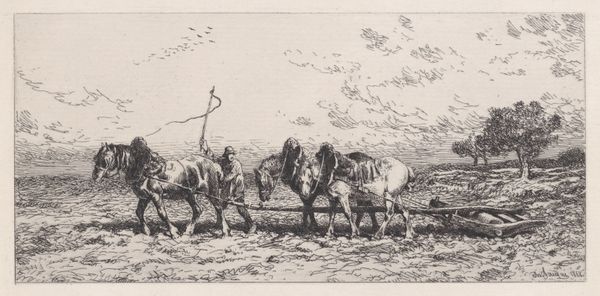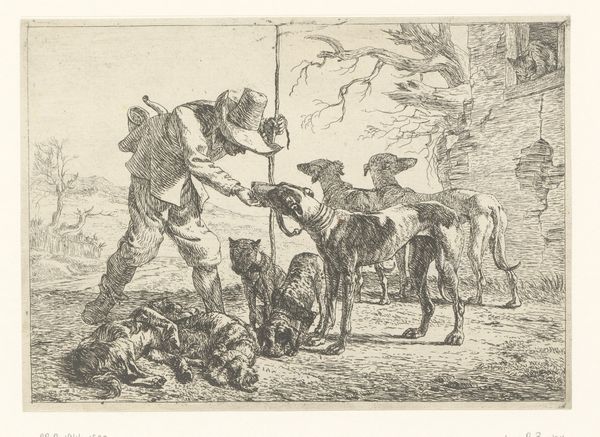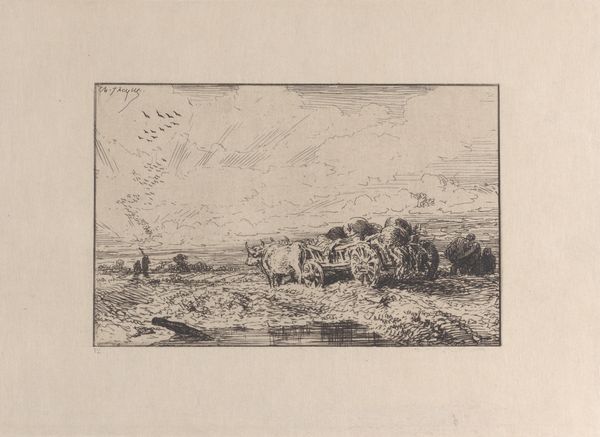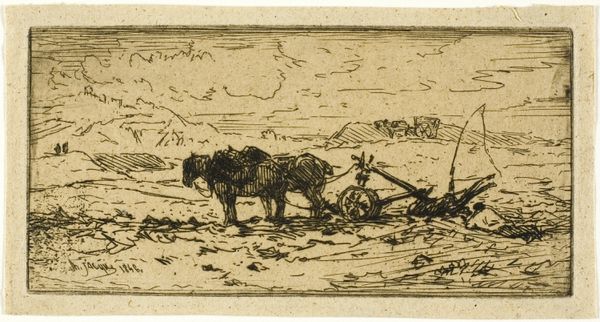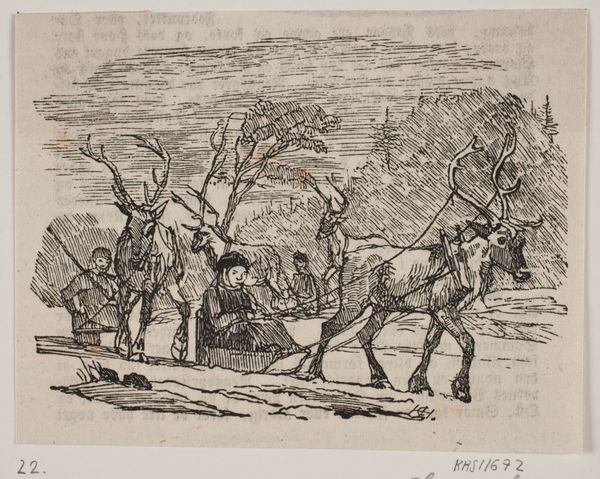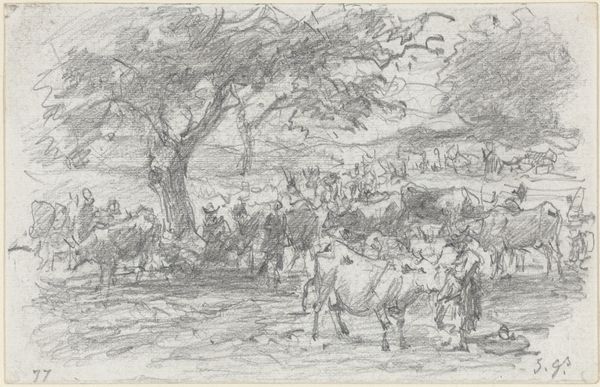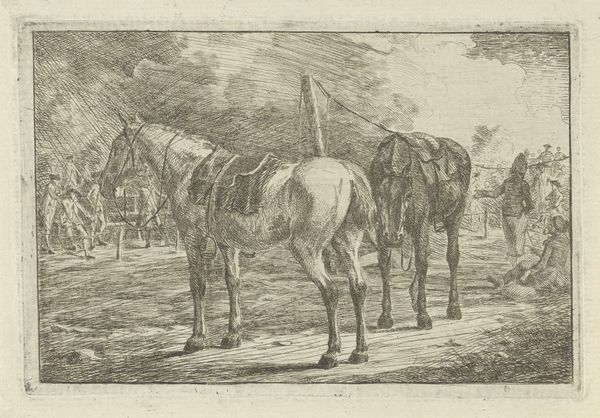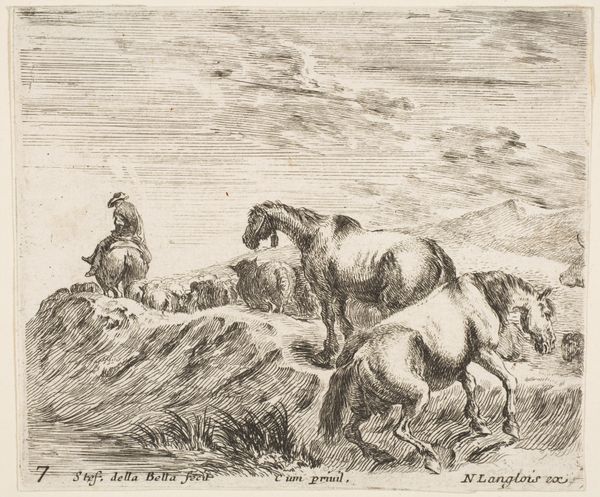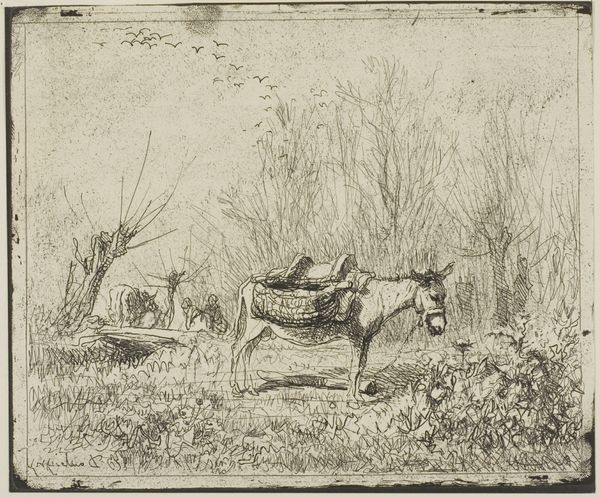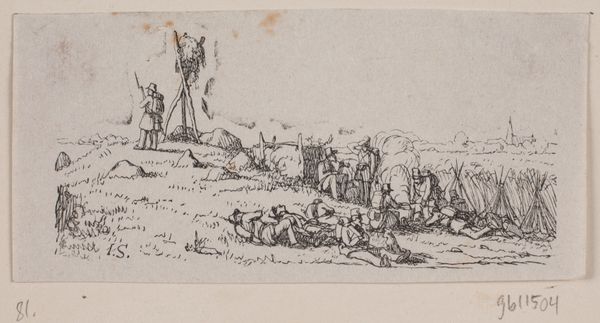
a) On Maneuvers (recto); b) On Maneuvers (verso) (Alle Manovre) 1888
0:00
0:00
print, etching
#
16_19th-century
# print
#
pen sketch
#
etching
#
pencil sketch
#
landscape
#
genre-painting
#
italian-renaissance
#
realism
Dimensions: plate: 8.89 × 13.97 cm (3 1/2 × 5 1/2 in.) sheet: 10.16 × 16.51 cm (4 × 6 1/2 in.)
Copyright: National Gallery of Art: CC0 1.0
Editor: So, this is Giovanni Fattori's "On Maneuvers," from 1888. It's an etching, which gives it this fascinatingly grainy texture. It looks quite small and intimate and feels more like a snapshot of everyday life than a grand history painting. What captures your attention in this piece? Curator: I see the direct result of labor: both the human labor of the soldiers depicted and the physical labor required to create this print. The etching process itself, with its acid baths and painstaking detail, is as much a part of the meaning as the subject matter. Consider also, the economic accessibility of prints compared to painting, allowing wider circulation of such scenes of military life. Editor: That’s a great point, I hadn't considered the labour involved. Does the setting suggest anything about that work too? The field? Curator: Absolutely. The depiction of the encampment, almost rudimentary in its execution, highlights the conditions endured by the rank and file. It strips away the romanticism of war, doesn’t it? The basic materiality of the tents, the hard ground, it all speaks to the labor inherent in military campaigns, and how that contrasts with say, artistic representations produced for wealthy patrons. Editor: It really does. Seeing it as a commentary on labor rather than a heroic depiction shifts the whole perspective. The materials used – the metal plate, the ink – they all contribute to the story being told. Curator: Exactly. The printmaking medium itself becomes a commentary on the dissemination and consumption of imagery. It raises questions: who is the artwork for, who can afford to see it and what values is the patron and viewer subscribing to? Editor: Thinking about the economics of art and how it influences both production and reception has changed how I view this piece. I’ll definitely be paying more attention to materials and processes from now on. Curator: Indeed, that perspective of the tangible processes is useful when contemplating all artworks.
Comments
No comments
Be the first to comment and join the conversation on the ultimate creative platform.

